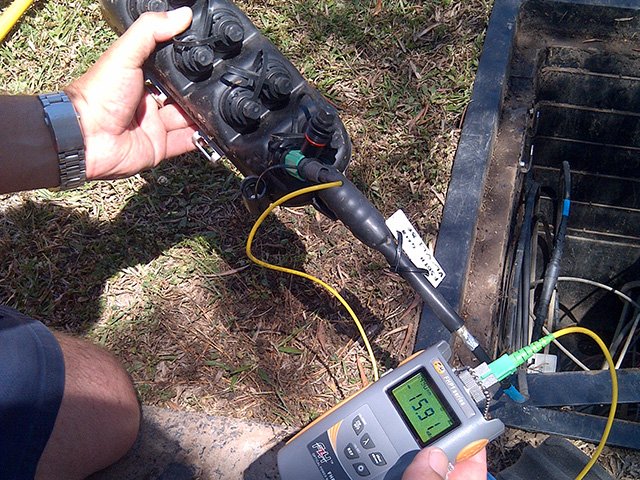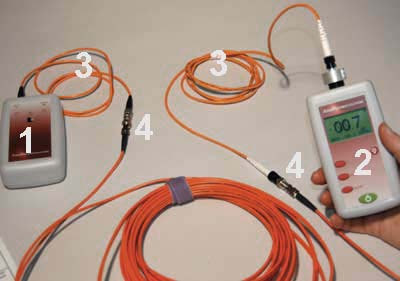High-tech fibre testing equipment identifies defects and maintains fibre integrity.
Checking Out the Advantages of Optical Fibre Evaluating for Enhanced Communication Systems
The relevance of optical fiber screening in contemporary communication systems can not be overemphasized, as it acts as a foundation for ensuring network dependability and efficiency. Utilizing advanced methodologies such as Optical Time-Domain Reflectometry (OTDR) and insertion loss evaluation, companies can not just recognize faults however also maximize their configurations. This proactive testing strategy has extensive implications for signal high quality and operational efficiency, raising the inquiry of exactly how these techniques add to long-term sustainability in an ever-evolving technological landscape. Comprehending these characteristics is crucial for stakeholders aiming to preserve an one-upmanship.
Value of Optical Fiber Screening
The importance of optical fibre testing can not be overemphasized in today's data-driven environment. As organizations progressively depend on high-speed data transmission for day-to-day procedures, the stability and performance of optical fiber networks are critical. Evaluating ensures that these networks can support the substantial amounts of information generated and transferred flawlessly, promoting efficient interaction and connectivity.
Optical fiber screening offers numerous critical features, including validating installment top quality, determining prospective faults, and figuring out total system efficiency. Routine screening can avoid pricey downtimes and service interruptions, allowing companies to maintain functional connection. Moreover, it aids in compliance with industry criteria and laws, ensuring that fibre optic installations fulfill needed specifications for security and reliability.
Furthermore, testing can improve the long life of fibre optic systems. By proactively determining problems such as signal loss, attenuation, or connector failures, companies can deal with problems prior to they rise, thus prolonging the life of their infrastructure. In recap, optical fiber screening is not just a technical need but a strategic financial investment that enhances network dependability, optimizes performance, and inevitably sustains the growth and performance of modern-day communication systems.
Secret Testing Techniques

OTDR is an essential strategy made use of to identify faults, measure splice losses, and examine the general integrity of a fiber optic web link. By sending a pulse of light down the fiber and examining the mirrored light, technicians can determine areas of mistakes and evaluate the network's performance over fars away.
Insertion loss screening determines the quantity of signal loss that happens when light travel through a connection or splice. This technique is crucial for validating that links fulfill specific loss limits, which is essential for keeping optimum efficiency in communication systems.
Optical return loss screening measures the quantity of light mirrored back in the direction of the resource as a result of blemishes in the fibre or connections. High return loss values show better efficiency and lowered signal degradation.
Together, these testing techniques supply a detailed evaluation of fibre optic networks, guaranteeing their dependability and performance in varied communication applications.
Effect On System Efficiency
Efficient optical fiber screening straight affects the total efficiency of communication systems. By ensuring the honesty of fibre optic cables, testing recognizes potential mistakes such as depletion, splice loss, and connector misalignment. These issues can substantially weaken signal quality, resulting in disruptions and reduced information transmission speeds.

Moreover, regular optical fiber testing adds to lasting system sustainability. It enables early detection of damage, permitting prompt maintenance and upgrades prior to significant failings take place. This not just lengthens the life expectancy of the infrastructure yet also ensures that interaction systems continue to be competitive in terms of efficiency.
Cost-Effectiveness and Performance
Cost-effectiveness is a vital factor to consider in the release and upkeep of optical fiber networks. Implementing durable optical fiber testing procedures can significantly reduce functional expenses by determining concerns prior to they escalate right into major issues. optical fibre testing equipment. By spotting faults, attenuation, and other efficiency hindrances early, organizations can prevent pricey repair work and downtime, which can disrupt services and result in profits loss
Furthermore, effective screening approaches improve the installation process, permitting specialists to function more efficiently. This converts to decrease work prices and faster task completion times. Advanced testing devices, such as Optical Time Domain Reflectometers (OTDRs), enables an exact analysis of fibre high quality, making certain that just ideal products are used, thereby reducing waste.
Regular screening additionally contributes to much better resource appropriation. By comprehending find the network's performance, companies can make enlightened choices regarding upgrades and developments, making certain that financial investments are made where they are most required. In recap, optical fiber screening enhances cost-effectiveness and performance, sustaining the lasting sustainability and competitiveness of interaction systems in an increasingly requiring market.
Making Sure Long-Term Integrity
Implementing rigorous optical fiber testing not just improves cost savings and operational performance yet also plays a pivotal function in ensuring the long-lasting reliability of click here for info communication networks. Constant screening methods, including attenuation and bandwidth assessments, help recognize possible degradation in fibre performance before it leads to service disruptions.
By utilizing advanced testing methods, network drivers can pinpoint faults or weak points in the fiber framework, permitting timely remediation. This positive technique decreases downtime, ensuring that communication systems remain functional and effective. Routine screening adds to the advancement of a much more durable network, as operators can adjust and maximize their infrastructure based on real-time data insights.
Furthermore, making sure conformity with industry criteria via optical fiber screening strengthens the quality and integrity of the whole interaction system. This adherence not just strengthens self-confidence amongst stakeholders but additionally straightens with governing demands, which are significantly rigorous.
Conclusion
To conclude, optical fibre testing functions as an essential component in boosting communication systems. By employing different screening techniques, such as OTDR and insertion loss evaluations, networks can attain ideal efficiency and integrity. The positive recognition of faults not just enhances signal quality yet also decreases downtime, inevitably adding to cost-effectiveness and operational effectiveness. Adherence to sector requirements promotes stakeholder confidence, making sure the lasting sustainability of communication infrastructures in a significantly data-driven landscape.